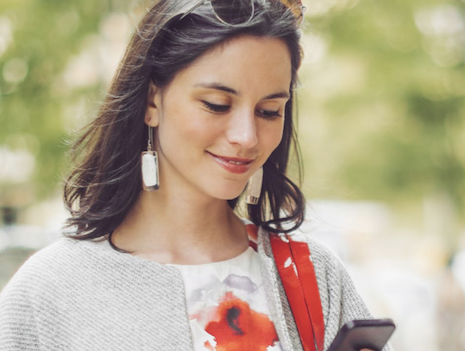
Formation's Brand Loyalty 2020 report calls for "hyper-personalization" in marketing post-pandemic. Image courtesy of Formation
By Dianna Dilworth
As retailers, hospitality firms and businesses across sectors look to appeal to consumers during a difficult economic situation, marketers that can deliver personalized experiences will be the ones to cultivate the brand loyalty needed to survive.
Fifty-eight percent of consumers have said they are more loyal to brands than they were five years ago, according to a new report called Brand Loyalty 2020 from tech firm Formation. The data included feedback from 2,000 U.S. consumers, revealing that they spend more money and time with these brands.
“In the era of COVID-19, customers are making fewer purchases, and for brands that aim to engage customers beyond a single purchase, understanding and adapting offerings to align with customer behaviors and priorities will help to create and maintain a loyal customer base,” said Christian Selchau-Hansen, cofounder/CEO of Formation, San Francisco.
“Consumers will likely be cautious in their spending for months to come, meaning building and maintaining their loyalty now will ensure you’re the first brand they turn to in whatever new normal we establish over time,” he said.
“In quarantine, homebound consumers relied heavily upon services like Netflix, Amazon and Spotify, whose business growth is driven by highly-personalized user experiences.”
 Personalization is no longer a differentiator, per a new study from Formation. Image credit: Formation
Personalization is no longer a differentiator, per a new study from Formation. Image credit: Formation
Personalization matters today
Luxury brands: take note. Because brands such as Netflix, Amazon and Spotify are curating such personalized experiences, consumers have increased their expectations for individualized experiences across every brand interaction.
The research found that 77 percent of consumers feel brands could be doing more to earn their loyalty.
“The need to deliver real value has only intensified as consumers must now weigh every purchasing decision against safety concerns and tighter household budgets,” Mr. Selchau-Hansen said.
Seventy-nine percent of consumers said that the more personalization tactics a brand uses, the more loyal they are to that brand, per the Formation report. Half of consumers surveyed would pay premium prices to experience this personalization.
Seventy-three percent of consumers said they are more likely to engage with a brand that offers a loyalty program versus one that does not. And 77 percent of consumers think that brands could be doing more to earn their loyalty.
So how can brands add a more personal touch?
When asked which personalization strategies are most likely to increase or decrease their loyalty, consumers cited “personalized Web site experience,” “personalized marketing email” and “personalized mobile notifications.”
“Consumers crave personalization on an individual level, and the thin line between personalization success and failure means brands must be extra thoughtful,” Mr. Selchau-Hansen said.
 Fifty-eight percent of consumers said they are more loyal to brands than they were five years ago, according to a new study from Formation. Image credit: Formation
Fifty-eight percent of consumers said they are more loyal to brands than they were five years ago, according to a new study from Formation. Image credit: Formation
Up, close and personal
The report revealed that 77 percent of consumers said across the touch points they have with retailers, be it email, apps or notifications, most messages are either somewhat or extremely personalized. And 81 percent of consumers are willing to share their data to have personalized experiences.
So while personalization is a core factor, it is no longer a differentiator.
With that in mind, brand marketers should realize that entry-level personalization like a marketing email that addresses a customer by name is no longer enough.
The report found that 75 percent of consumers said the marketing emails they open frequently already contain macro segmentation such as segmenting by age or demographic or even micro segmentation tactics based on lifestyle and interests.
“Consumers consider those tactics to be table stakes,” Mr. Selchau-Hansen said.
“Messages or offers built for broad macro or micro segments don’t take individual preferences into account and don’t give consumers the level of personalization they crave,” he said.
Instead, brands should unify behavioral data across the purchase cycle to curate one-to-one messages.
“Treating customers as individuals is essential for creating more engaging loyalty programs,” Mr. Selchau-Hansen said.
“Our report found that 73 percent of consumers said the brands they engage with the most recognize them on a one-to-one level,” he said.
The report also revealed that a personalized Web site experience, followed by a personalized email experience were the top personalization strategies, most likely to increase brand loyalty. Interactions should meet customer needs and not just brand desires to push products.
Loyalty programs are a great tool for brands to connect with consumers and gather meaningful data to deliver strong personalized experiences.
“Engaging loyalty programs are both highly relevant and provide true value to customers,” Mr. Selchau-Hansen said. “They can do this by giving customers choices in how to redeem their rewards and ensuring those options are tailored to them.
“Brands can also increase engagement by bringing in tactics like gamification and increasingly better rewards that can enhance and incentivize the experience,” he said.
 Formation's Brand Loyalty 2020 report calls for "hyper-personalization" in marketing post-pandemic. Image courtesy of Formation
Formation's Brand Loyalty 2020 report calls for "hyper-personalization" in marketing post-pandemic. Image courtesy of Formation
 Personalization is no longer a differentiator, per a new study from Formation. Image credit: Formation
Personalization is no longer a differentiator, per a new study from Formation. Image credit: Formation Fifty-eight percent of consumers said they are more loyal to brands than they were five years ago, according to a new study from Formation. Image credit: Formation
Fifty-eight percent of consumers said they are more loyal to brands than they were five years ago, according to a new study from Formation. Image credit: Formation